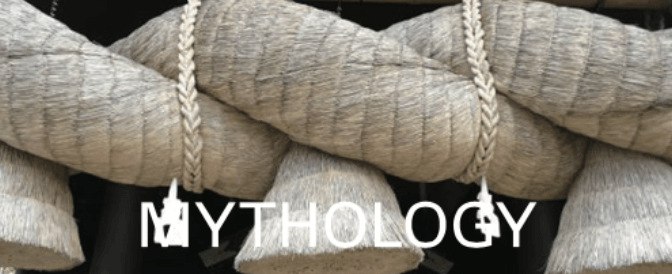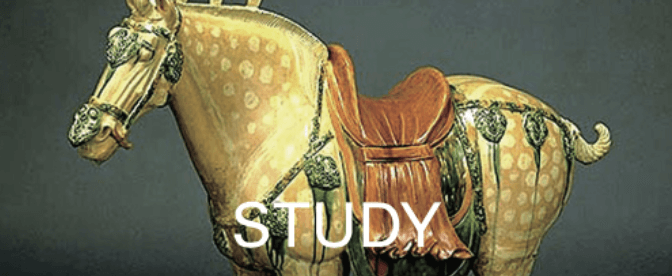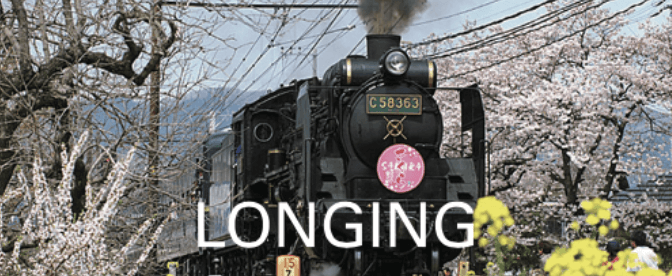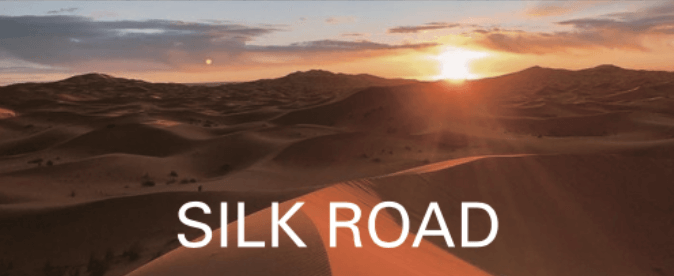
Asai Chuu (1856 – 1907), a Japanese painter who developed the western style of art movement in Japanese paining, was the child of a retainer of the Sakura Domain. He studied painting under Antonio Fontanesi (1818 – 1882), who was a teacher of Oyatoi Gaikokujin, the foreign employees in Meiji Japan. He traveled to rural Japan to try to create the Japanese Barbizon school. He transformed himself with the backbone of retainers of Sakura Domain, in the current of the times.
He died in Kyoto in 51 years old. However, his life of journey remained a font of innocence that continues to inspire us in the beauty of Japan. This came from the painting technique of adjusting natural light, which he learned during his studies in France.

Asai Chuu (1856 – 1907), was a Japanese painter who worked in developing the western style art movement in Japanese paining. He traveled to a rural village in Japan, studied abroad in France, and contributed to human resource development of painters, in the Meiji period (1868 – 1912). Fuwa Akira (1901 – 1979), who studied under Ishii Hakutei of Asai Chuu’s school, was born when Asai was staying in France and became the leading person of Japanese watercolor painting.
He said “I think that I can get a beauty that oil paintings do not have, by painting transparently.” He drew the landscape with the eyes of the people who live there, using the watercolor method that allows the base lines and color surfaces to be seen through.
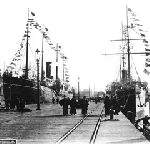
This museum introduces well the history of shipping that opened Japan to the world. “The arrival of Matthew C. Perry (1794 – 1858)”, a Commodore of the United Sates Navy, who played a leading role in the opening of Japan, occurred in 1853, and “Yokohama port opening”, was in 1859. A passenger and cargo ship, Tosamaru, left for London in 1896. In the Edo period (1603 – 1868), there were only domestic ships, like Kitamae-bune, cargo ships that sailed the Japanese Sea.
In just 30 years, Japan learned ocean voyage technology and could provide even Western services to foreign customers. It shows the spirit of the Japanese in the Meiji period (1868 – 1912).

This museum consisted of two museums, Natural Museum and Humanity Museum. They introduce the nature and humanities fields of Miura Peninsula. Ikokusen Torai Emaki, a picture scroll of the US fleet arrival, conveys the arrival of Matthew C. Perry (1794 – 1858), a Commodore of the United Sates Navy, who played a leading role in the opening of Japan, in 1853.
The Tokugawa Shogunate did not panic and observed calmly. The drawing described the Name of Masanobu Nishimura, Hoshi, an infantry retainer of the Shogunate, in the summer of 1853, describes a landing Kurihama Wharf and a march from the Kurihama Wharf to the reception place. In addition to the fleet and US Navy, their offering and belongings are drawn well and carefully.

This museum opened in Kamakura in 1951, as the first public museum of modern art in Japan. It possesses a collection of approximately 15,000 works (as of 2021) centered on modern Japanese art.
Currently, it is consists of two buildings, the Hayamakan facing the Isshiki coast in Hayama Town, and the Kamakura Annex designed by Otaka Masato(1923-2010). Each building has several exhibitions each year, which introduces modern and contemporary art from Japan and abroad.
The garden with outdoor sculptures can be enjoyed by walking around without a ticket.
–
The Landscape of Enoshima Kanagawa Takahashi Yuitsu 1876-1766
The possession of the Museum of Modern Art, Kamakura & Hayama
Takahashi Yuichi (1828-1894) is one of Japan’s leading Western-style painters born during the Edo period (1603-1868). He has the feeling of Edo Culture as well as the detailed and realistic drawing method of Koubu Arts.,Technology Arts in the early modern Meiji period (1868 – 1912). It’s like time travel!
Kamakura
Tel : +81-467-22-5000
Address : 2-8-1, Yukinoshita, Kamakura, Kanagawa
Hayama
Tel : +81-46-875-2800
Address : 2208-1, Ishiki, Hayama-cho, Miura-gun, Kanagawa

This museum is located in a quiet mountain of Shimoda, where Townsend Harris (1804 – 1878), the first United States Consul General to Japan, came over to meet with Toklugawa Iesada (1824 – 1858), the 13th Shogun of Tokugawa Shogunate, at Edojo Castle in 1857. This museum has a collection of modern western paintings by Jean Camille Corot (1796 – 1875), a French painter of Italian Landscapes and Pablo Picasso (1881 – 1973), a Spanish artist who lived in France.
It also exhibits modern Japanese paintings by Kawai Gyokudo (1873 – 1957), Umehara Ryuusaburo (1888 – 1986), Suda Kunitaro (1891 – 1961), Higashiyama Kaii (1908 – 1999), and others. You can enjoy the modern breadth of Japan, in paintings and with the relaxing, surrounding mountains.

This temple used to be a thatched hut of the Shingon sect. After this belonged to the Soto school of Zen in the 1580s, this temple was renovated and relocated.
By the Conclusion of the Treaty of Peace and Amity between the United States and Japan in 1856, Townsend Harris (1804 – 1878), who came from New York and was the first United State Consul General to Japan, came this temple with the first US Consulate. Stars and Stripes, the National flag of the USA, and raised it in the garden of this temple for 2 years and 10 months.
This temple possesses Harris’s favorite relics, and the diary of Hamada Yoheiji, the headman of Kakisaki Village, which clearly conveyed the affairs at that time. This temple has the oldest daguerreotype in Japan of Russian officers, too.

By the Conclusion of the Treaty of Peace and Amity between the United States and Japan in 1856, Townsend Harris (1804 – 1878), who came from New York and was the first United State Consul General to Japan, came to Gyokusenji Temple to open the first US Consulate. Harris often walked along the path on the Kakizaki coast in front of Gyokusenji.
Harris was a trader and not a professional diplomat. Even when diplomatic relations were held, the problems of administrative sovereignty of the Imperial Court and the Shogunate were entangled, and the desired negotiation results were not reached. It was the scenery of this path that healed Harris, who was tired every day.
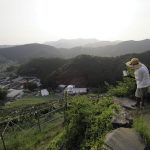
Products of Sincerity Wine from COCO FARM & WINERY in Ashikaga, Tochigi makes wine from grapes that are cultivated at Cocoromi gakuen, a farm at a residential facility for intellectual disability and autistic people. Cocoromi means Trial, in Japanese. In the 1950’s, intellectual disability students and their teacher began cultivating the very steep hill as a vineyard.
This hill has good sunlight and drainage that enables grapes to flourish. But the land is on a 38 degree slope, so all work must be done by human hands, like during the Yayoi period of ancient Japan. During the harvest season, the workers tap cans to make a noise that will drive the crows away from the harvest. They work on the hill, with sincerity.
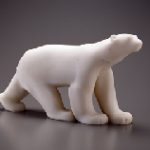
The theme of this museum is “Nature and Humans”. It introduces works such as the “Polar bear” by Francois Pompon (1855 – 1933), a French animal sculptor who used to prepare the carvings for Auguste Rodin (1840 – 1917), the French sculptor. The annex also has a room that reconstituted the atelier of Pompon, and a workshop. It also features the expansive architecture surrounded by a wide lawn and water.
Like painting models and craft in the Edo period (1603 – 1868), Japanese art also influenced Pompon’s style, which omits details and simplifies the form with a flowing silhouette.
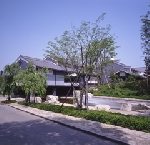
This museum introduces the materials of Takami Senseki (1785 – 1858), who was a scholar of Dutch studies, a geographer and a chief retainer of the Koga Domain, Ibaragi. The museum also shows the history of the Ashikaga clan, who established the Muromachi Shogunate and ruled Japan during 1366 – 1573. They moved their base from Kamakura, Kanagawa to Koga Ibaraki, during the medieval period.
This museum is adjacent to Takami Senseki Memorial Hall, which was Senseki’s residence of the retainer of the Domain, where he continued to study Rangaku, the study of Western sciences in Dutch language, after his retirement. That hall exhibits Senseki’s Dutch map and the surveying instruments.
Senseki had the sharpness of his observation and the insight of understanding the essence as it appeared in the portrait drawn by Watanabe Kazan (1793 – 1841) a Japanese painter, scholar, the retainer of Tahara Domain Mikawa Province Aichi.
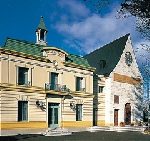
Cultural facilities are lined up along this road that connects the 9km prefectural road from Shibukawa city center to Ikaho Onsen, hot spring. Ikaho Onsen was described in Manyoshu, the 8th century anthology of Japanese poetry, which was loved by many literary people since the Meiji period (1868 – 1912), including Soseki Natsume (1867 – 1916), a Japanese novelist, best known around the world for his novel Botchan.
The road of art from the Japan Chanson Museum to the Memorial Literature Museum of Tokutomi Roka (1868 – 1927), dedicated to the Japanese writer and philosopher, has outdoor sculptures scattered along the way. You can encounter beauty anywhere.
– Manyoshu includes Azumauta, the poetry in eastern provinces, which were mostly love songs. Utagaki, the ritual event where young men and women gathered at special date and exchanged love songs, was popular in the eastern provinces since ancient times.
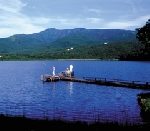
The Japanese Romantic Road runs approximately 250km to link Ueda City, Nagano Prefecture, Kusatsu Town, Gunma Prefecture, and Nikko City, Tochigi Prefecture.
Sculptural beauties of nature line the road as Highlands, Waterfalls, Lakes and Wetlands, created by volcanic eruptions from Mt. Asamasan, Mt. Shirane and Mt. Nikko-Shiranesan. Baragiko Lake is a natural reservoir, with landscapes, flowers and wild birds.
You can get to know nature through boating, fishing, walking along the lakeside promenade, and cycling. The campsite is open by the lakeside in the summer, where you can enjoy the safe and fun outdoor life.

Takami Senseki (1785 – 1858), who was a scholar of Dutch studies, a geographer and a chief retainer of the Koga Domain, Ibaragi, had the sharpness of his observations and the insight of understanding the essence as appeared in the portrait drawn by Watanabe Kazan (1793 – 1841) a Japanese painter, scholar, and the retainer of Tahara Domain Mikawa Province Aichi.
His insight grew from his initiative and practical sense to hold Oranda Shogatsu, a Dutch style New Year’s celebration, along with the vast amount of materials collected. This museum used to be his residence of the retainer of the Domain, where he continued, after his retirement, to study Rangaku, the study of Western sciences in Dutch language.
This museum exhibits the Dutch map and the surveying instruments.
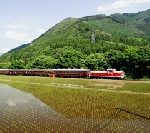
The railway runs along the Watarase River, named by Shodo Shounin, a High Priest in the 8th – 9th century, and you can enjoy the beauty of the gorge from the window. In particular, the view of Takatsudokyo in Omamachi, is a spectacular view, which is praised as ” Yabakei Gorge: scenic beauty in Nakatsu Oita, in the Kanto region”.
A trail of approximately 500m will be maintained from downstream of Takatsudo Bridge to upstream of Hanetaki Bridge. You can enjoy a fount of innocence from the mountains’ multi-layered structure, including the scenic spots of the Gorilla-rock and potholes.

This memorial museum opened in 1998. Tokutomi Soho (1863 – 1957) was a journalist, historian, and politician who loved the nature of Lake Yamanaka, visited every summer from 1932 to 1945, and stayed at a villa named Sogiso. Soho wrote “Kinsei Nihon Kokumin shi – A History of Early Modern Japan: Japanese overview of history from the Azuchi-Momoyama period (1573 – 1603) to the Meiji period (1868 – 1912),”. He started to write this at age 56 in 1918, and completed 100 volumes over 35 years. You can experience his tough life.
– Suho insisted that after World War II, even within the Globalization of democracy, Imperialism guards the principle of people, based on universal providence.
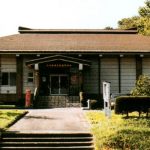
The Asadokoro coast is a shelf at the base of the eastern side of the Natsudomari peninsula. This coast is known as the migratory destination of the whooper swan from ancient times, and there are scenic spots of Matsushima and Komatsushima.
At this museum, excavated items from the early Jomon period of 10,000 years ago are displayed. Moreover, the master of the Tsugaru jamisen, a three-stringed Japanese banjo, Takahashi Chikuzan (1910-1998) was born here and was introduced at his material exhibition room, too.
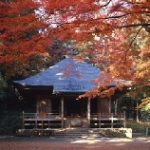
The statue of Amidabha, in this temple’s Konjikido, Golden Hall, has the affable smile and an elegant aura, which expresses the nobility of the late Heian period (mid 11th – 12th Century). This statue, along with the left and right flanking statues, was created in the first half of the 12 Century, with Jocho-style, an elegant Japanese sculpture style established by Jocho. Visitors can feel the calming atmosphere of the Heian period, as they stroll down the Tsukimizaka slope to ascend to Golden Hall.
The scenery includes smaller Buddhist statues, in small halls, surrounded by cherry blossoms, Chusonji lotuses, chrysanthemums, crimson foliage, and the gorgeous snowscapes, depending on the season.
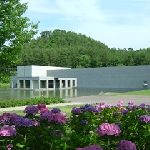
This museum is Japan’s first museum specializing in photography. Domon Ken (1909 – 1990) became the 1st Honorary Citizen of Sakata City in 1974, and he donated all of his works to his hometown, Sakata City. Sakata City established this museum in 1983. This museum is in Iimoriyama Park, with beautiful natural forests and hills in the background. Domon Ken is a photographer who captures the beauty of Japan and the heart of the Japanese, based on the principle of“A truly good photograph captures more than the naked eye”.

This hall is close to the entrance of Chusonji Temple Omotesando, the main approach to the temple,” of Tsukimizaka”. It is also the front museum of Chusonji Temple, which introduces Hiraizumi of the three generations of the Oshu-Fujiwara clan, in the Medieval Age and of the Date clan in the Early Modern Times. It displays models and drawings of Motsuji Temple, Muryoko-in temple, the temple that imitates Uji-byodoin Temple, and Nikai Daido.
The restored model of Muryoko-in temple, which was supervised by Fujishima Gaijiro (1889 -2002): a Japanese architectural historian, and a professor emeritus at the University of Tokyo, guides us through the thought of the scene of Pure Land by the Oshu-Fujiwara clan.
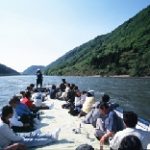
Matsuo Basho (1644 – 1694), the most famous poet of the Edo period, travelled to feel abundant by the landscape he encountered, rather than to mourn uncertainty in the hermitage. The Mogami River boating transportation flourished since the Nara period (710 – 794) and continued to support Kyoto, Osaka and Edo. The transportation continued to supply safflower for dyeing, weaving, and makeup, for which it was the top supplier in Japan, during the Edo period (1603 – 1868).
The group of Minamoto no Yoshitsune (1159 – 1189) the famous warrior and direct descendant of the Minamoto clan, went up the river by boat, in the Kamakura period (1185 – 1333). Matsuo Basho went down river by boat, 500 years later, and wrote a poem – ”Samidarewo Atsumete Hayashi Mogamigawa – Gathering early summer rain, swiftly flows the Morgami River”
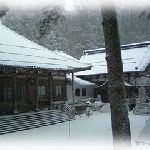
This temple in Tsuruoka city was started by Myotatsu Shonin, the priest of the Sendai sect from Dewa Province Yamagata in the middle of the Heian period (794 – 1185). He had a hermitage here. This temple spread the Ryujin faith as a temple of the Ryujin, a guardian of the sea, along with the development of the northward marine route in the Edo period (1603 – 1868).
There is “Gyorin Isai Kuyo-to,” a five-storied pagoda of fish memorial, beside Sanmon, the main gate of the temple. It has sculptures of sea water and fish, to pray for the fish’s soul to rest in peace. It is unusual. In addition, a magnificent complex of temple buildings, such as the Ryuoden, dedicated to the Ryujin, remain of the 1,200 year history of faith.
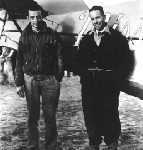
Two American youths, Clyde Panghorn (1895 – 1958) and Hugh Herndon Jr. (1899 – 1950), flew off from the Sabishiro Coast of Misawa Village on October 4, 1931 at 7:01 am. They tried to become the first non-stop flight across the Pacific Ocean, in the airplane named Miss Veedol. After a flight of 41 hours and 10 minutes, she landed safely in Wenatchee, Washington USA, completing the great achievement.
At that time, Japan was in the Showa Depression (1930 – 1931) and the Tohoku Region had a hard year due to a bad crop and a famine. However, the people of Misawa village were actively performing volunteer work, such as runway maintenance. They were very grateful for the two Americans.
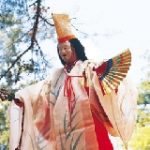
Mt. Yakeishidake, with an altitude of 1,548m, spans both Iwate and Akita prefectures. It is covered with the beech virgin forest and is rich in Alpine plants. The mountain trail sometimes becomes like a river with snowmelt water. With abundant water, there are many wetlands, ponds and swamps on the mid slope, creating a magnificent flower garden.
Alpine plants bloom near the summit, from where the Japanese Alps can be seen. Even at an altitude of 1,000m, the low latitude of the Tohoku region creates a reservoir of flowers.
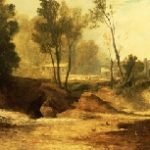
This museum is on the hillock overlooking Mt. Adatarayama from Koriyama City. It exhibits the works of Joseph M. Turner (1775 – 1851), a landscapist from the UK, Japanese modern art after the Meiji period (1868 – 1912), and the works related to Koriyama City.
Turner’s realistic painting style changed in Venice, Italy, as he eventually drew landscape paintings that pursued the effects of the atmosphere and light, and raised his awareness of nature. – “Preserve as much of a fount of innocence that is awakened to the truth”
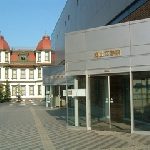
This museum of literature is located at Otemon Plaza Hiroski Park – Hirosakijo Castle, which was built 400 years ago. It opened in 1990 and has a permanent exhibition room, the “Ishizaka Yojiro (1900 – 1986), Memorial Room”, by Yojiro Ishizaka, a writer who was born in a merchant family in Hirosaki City in 1900. Flowers do not bloom on the beautiful sandy smooth and dry sand soil, and unfortunately unexpected experiences make a large blossom at a later date.
Young people, do the great unfinished! – Wakaihito – A novel that takes place at the mission girls’ school in the northern district, depicts a trivial relationship among a fragile and vulnerable girl, a young male teacher, and a cool and intelligent colleague’s female teacher. Even with a unique living environment and dangerous sensitivity, the girl gains strength over her body, with the desire of the soul.
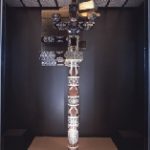
This museum is a historical museum representing the Tohoku region adjacent to the Tagajo Haiji Site. This remade pillar, possessed by this museum, is a pillar of the Konjikido, Golden Hall, of Chusonji Temple, Iwate, where Matsuo Basho (1644 – 1694), the most famous poet of the Edo period, made a poem, “Hotaru no Hiruma ha Kietsutsu Hashiraka na – The pillars of Konjikido, Golden Hall, of Chusonji Temple looks like a Firefly by day” The museum introduced: handicraft techniques of the latter Heian period (794 – 1185), such as the Raden, work of white shining turban shell, the openwork metalwork and lacquer work, in everywhere and even Nageshi, a horizontal piece of timber in a frame, which are organically together.
This museum also tells us the overlap between Fusui theory, to create harmony in the environment through the manipulation of energy, and Pure Land philosophy in Hiraizumi, Iwate and Chusonji Temple.

Jean Camille Corot (1796 – 1875), a French painter of Italian Landscapes, had traveled to various parts of Italy and France, expressed a mundane landscape with a poetic and fantastical portrayal of light, and opened the way for new landscape painting. “Ville d’Avray – Camille Corot.” This work draws the scenery of Ville d’Avray in the suburbs of Paris France, a villa that his father purchased.
This scenery of the village overlaps with the foot of Mt. Shinobuyama, Fukushima City, which has good water quality. This museum has more than 2,000 paintings, prints, and sculptures.
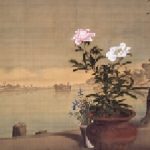
This museum collects and exhibits outstanding art works since the early modern times. Included are Akita ranga, Dutch-style Japanese paintings, painted by a feudal lord of the Akita Domain and vassals in the middle and latter part of the Edo period (1603 – 1868). There are more than 30 outdoor sculptures around the museum. The Satake clan was a feudal lord of Akita Domain during the Muromachi Period (1366 – 1573). The successive lords of this Domain had been keen on the education project. The 8th feudal lord, Satake Yoshiatsu (1748 – 1785), was the founder of the Akita ranga school. Akita ranga, was Japanese painting in Dutch-style which had the composition of western drawing techniques and painting materials of pure Japanese as a compromise between Japanese and foreign styles. Those perspective drawings greatly influenced Ukiyoe, Japanese woodblock prints. It happened before the Tenmei ara (1781 – 1789), when Takami Senseki (1785 – 1858), a scholar of Dutch studies, and a chief retainer of the Koga Domain, Ibaragi, were born.

This road connects Numata City, Gunma Prefecture to Aizuwakamatsu Fukushima Prefecture, through Ozenuma Pond. This road is known as Aizu Kaido Road, in Gunma and Numata Kaido Road, in Fukushima. This road was A trade route that carried rice and sake from Aizu Fukushima and oil, salt and commodities and merchandise from Joshu Gunma.
And it reaches the wetland at the uppermost stream of the Tadamigawa River, flowing through the Aizu area. In the spring, clear white Mizubasho, skunk cabbage grows in the caramel color wilderness, and in the early summer, golden Nikokisuge, broad dwarf day lilies, grow in colonies, as far as you can see.
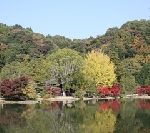
The Amidado, a temple dedicated to Amitabha, which is the principal image of Buddha in Pure Land, and the garden of Shiramizu Amidado, reflect the elegant scenery. The composition of painting of the Jodo Mandala, Mandala of Pure Land, was transferred to the precincts. Tokuhime, built Muryojuin Ganjyoji Temple at Shiramizu in 1160, to pray for her husband’s soul to Rest In Peace.
She was the daughter of Fujiwara no Kiyohira (1058 – 1128), the founder of Northern Fujiwara Dynasty in Hiraizumi, Iwate, and the wife of Iwaki Tayu Norimichi of Kokushu of Iwaki, a governor of Iwaki Province. The Amidado, was built on one side of the temple, which was surrounded by a pond on three side: east, west, and south.
It is said that the name of Shimizu was divided from a Chinese character in the name of Hiraizumi, which was Tokuhime’s hometown.
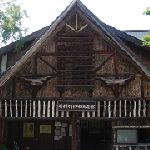
This museum is Hokkaido’s oldest Aynu Cultural Museum. It displays tools and valuable materials. Kamui, God, comes from the sun, the mountains and the sea. Everything and everywhere the gods stay is holy. Every living thing is holy.
The view of life and death is rare, and holy things shall always circulate. I can feel the prayer in my life here.

Otaru City was blessed with a good natural port. It prospered from ancient times through the Kitamaebune trade of the Edo period (1603 – 1868). During modern times, Otaru also prospered as a commercial city and produced artists, literature and other excellent writers.
Japanese painter and Otaru native, Toukan Fudeya (1875-1950) was the most active early modern artist. He drew harmonies of multilayered themes, with landscape and Buddhism paintings and others.
This museum shows you the works related Otaru and the beauty of Otaru, where the ancient and modern overlapped.
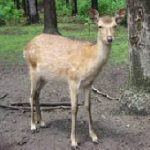
Toya Lake is a round lake. Although the acidity increased due to drainage problems, and the lake lost its transparency, the lake water was restored in 1973, by the neutralization project, using mine wastewater. It’s mystery was revived.
The museum located on Nakajima, in the lake, exhibits specimens, stuffing, dioramas and panels to show the rich nature and life surrounding Toya Lake. Outside the museum, there are meeting facilities.
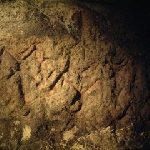
This center, adjacent to the Otaru Museum Main Gallery, exhibits and preserves hollow relief drawn around 1600 years ago. These are similar to the rock wall paintings around the Amur River, which flow to the east of Siberia.
This hollow relief was carved during the post Jomon period (3rd century BC – 7th century). That time was from the end of the Yayoi period to the beginning of the Tumulus period on the main island of Japan.
Otaru is a place where the culture of post Jomon and the southward northern culture, had overlapped.
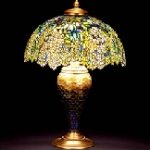
Hokkaido has a unique climate, different from Honshu Island, and its ecology is close to that of the Eurasian Continent. There are many artworks reflecting the unique view of nature in this large earth surface.
You can experience the nature of Hokkaido more deeply by looking at the climatic nature such as Kida Kimijiro (1893-1962), Kanda Nishou (1937-1970), Sunazawa Bikky (1931-1989), Iwahashi Eien (1903-1999) held in the collection.
In addition, this museum also has a collection of glass crafts, ranging from Art Nouveau to Contemporary styles.
